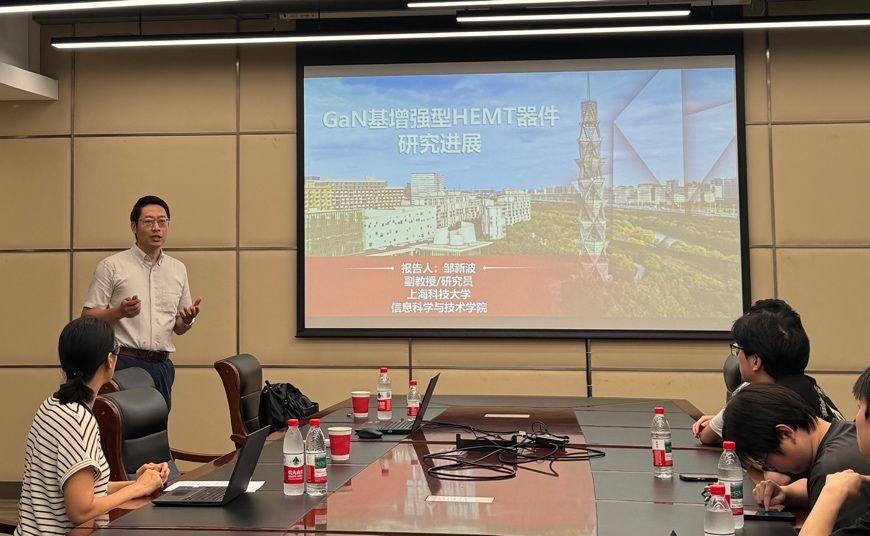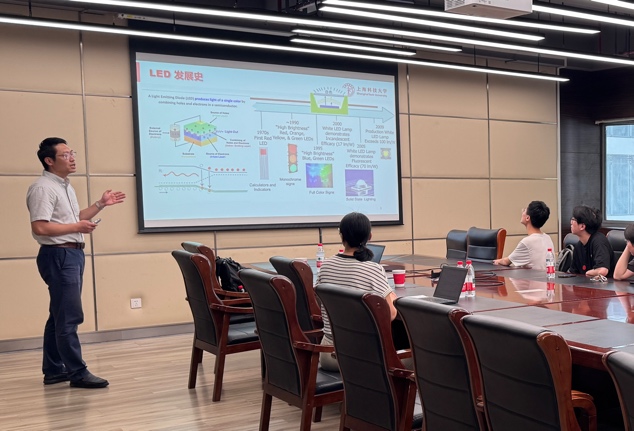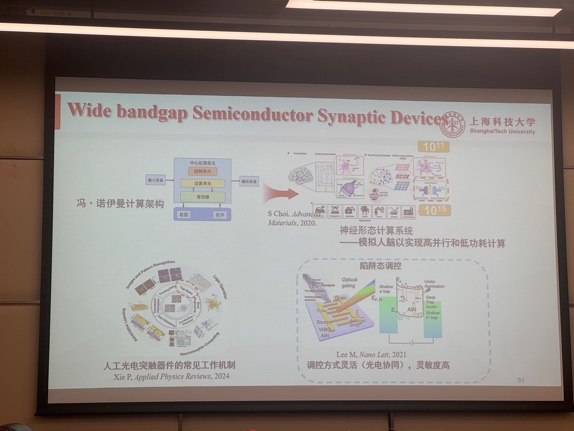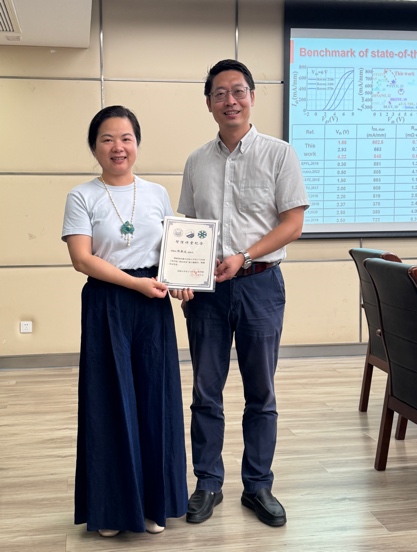On June 17, 2025, the 82th Zhi Xin Forum was held in Room305 at Zhi Xin Building, which was jointly organized by the College of Electronic and Information Engineering and Shanghai Institute of Intelligent Science and Technology of Tongji University. AssociateProfessorXinboZou fromShanghaiTech Universitywas invited to give a lecture on “Research progress on GaN based enhanced HEMT devices”.

In this report, AssociateProfessor Zou introduced his team’s latest research progress on p-GaN cap-enhanced HEMT devices and recessed-gate enhancement-mode devices. Gallium nitride (GaN) is a wide-bandgap semiconductor material characterized by a large bandgap, high breakdown electric field, and high electron mobility. Benefiting from these superior material properties, GaN-based electronic devices have been widely applied in consumer electronics fast charging, high-frequency communication, radar systems, and are expected to expand into emerging fields such as server power supplies and automotive electronics.High electron mobility transistors (HEMTs) based on GaN are typically depletion-mode devices, meaning they remain in the conducting state in the absence of an external gate bias. However, such devices require a negative gate voltage to turn off in power electronics converter applications, which increases the complexity of the gate driver circuitry and introduces risks such as device or system short-circuiting in the event of gate failure. In contrast, normally-off (enhancement-mode) GaN HEMTs offer simplified gate drive design and improved protection schemes. As such, enhancement-mode GaN transistors have become a key research focus in the GaN device community.


After thereport,AssociateProfessor Zou had a cordial exchange and discussion with the participating teachers and students, and he also encouraged them to actively broaden their horizons, explore, discover and solve new scientific problems based on his own experience. Thisreportfurther expanded the vision of our teachers and students and enhanced their understanding andknowledgeofprogress on GaNbased enhanced HEMT devices.

